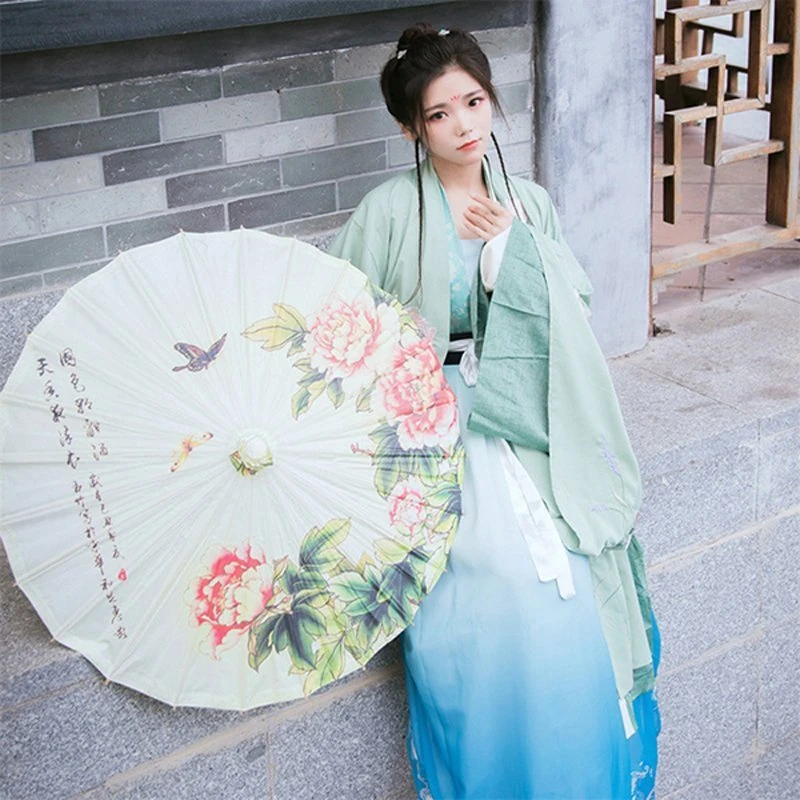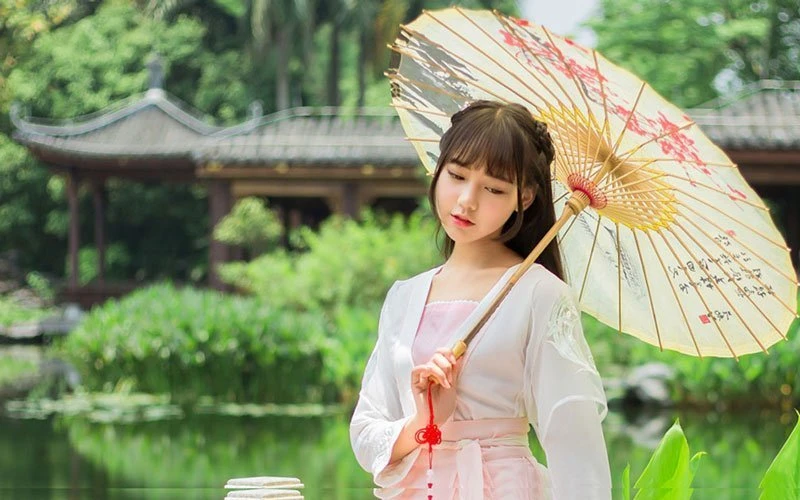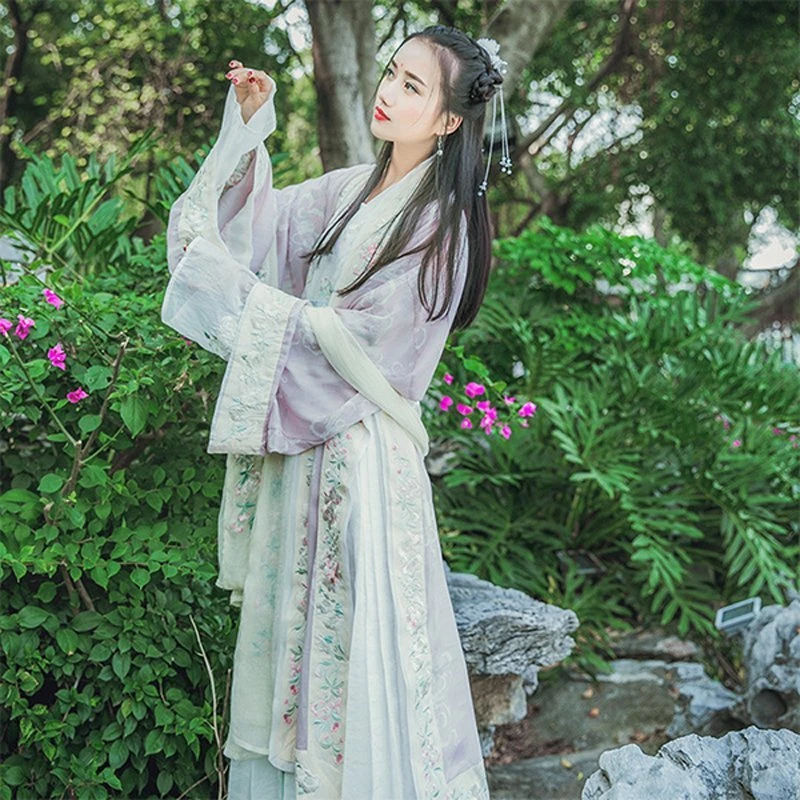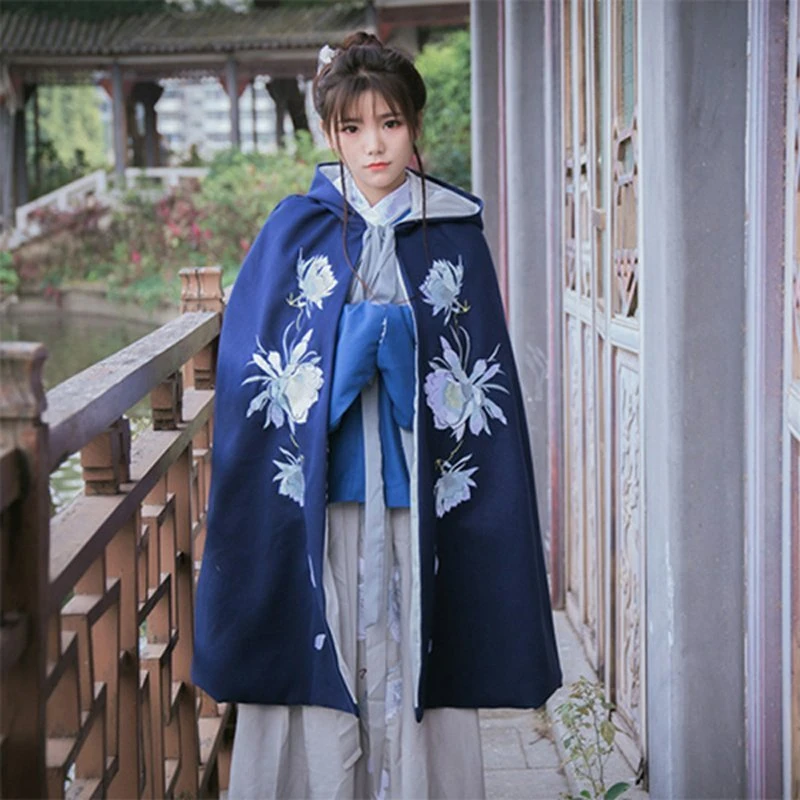Any good things are tempered, and Hanfu is the same. Hanfu has a history of thousands of years, but in the past three hundred years. Hanfu has experienced many setbacks.
What is Hanfu
Hanfu, the "traditional costume of the Han nationality", is also known as "Chinese clothing crown", "Huafu", "Chinese costume" and so on. It was from the"Xuanyuan, Huangdi is wearing clothes and the world is ruled", until the Ming Dynasty demise.
Han nationality with the Huaxia nationality as its predecessor, according to "Zhou Li", respecting "the law of heaven and earth, the unity of nature and man, the doctrine of the mean" and so on, with the "Huaxia-Han" culture as the background and leading ideology.
Focusing on the Chinese ceremonial culture, a set of unique Han nationality styles formed in extensive historical practice, clearly different from other ethnic groups' traditional clothing and apparel system. It contains wedding dresses, formal dress, sacred clothes, mourning clothes, uniforms, and other clothing that can adapt to various occasions.
Hanfu is the embodiment of China's "state of etiquette" and "splendor China", it carries the outstanding craftsmanship and aesthetics of the Han people's dyeing and weaving embroidery, inherited more than 30 Chinese intangible cultural heritage and protected Chinese craft aesthetics.

Hanfu beginning with the Yellow Emperor(黄帝), evolution wish Yao(尧) and Shun(舜), is from Yellow Emperor made Mianfu (冕服: an ancient formal dress name), stereotype in Zhou Dynasty. And through the Han Dynasty based on the four books and five classics to form a complete clothing system, became part of the Shinto teaching. Therefore, all the dynasties later inherited the Hanyiguan (Han's clothing system) as a national event.
Hanfu also influenced the entire Han culture circle through the Huaxia system. Some ethnic groups in Asian countries such as Japan, North Korea, Vietnam, Mongolia, Bhutan, etc. All have the characteristics of Hanfu.
The inheritance of Hanfu
Hanfu as a traditional national costume of the Han nationality, has been inherited for thousands of years, but in the middle of the 17th century, after the Ming Dynasty’s demise, the Qing Dynasty's political power established by the Manchus in order to destroy the Han Nationality's national self-esteem and national identity, promote "shaving and easy to wear". That is, the Han people changed into Manchu costumes and changed into Manchu’s hairstyles. The Han people have fought fiercely against it, Hanfu gradually disappeared from history.
However, Han’s struggle also allowed Hanfu to survive in the gap between history. The Manchu rulers finally acquiesced in the policy of “Ten allowed, ten not allowed”, the Hanfu was able to exist in the inheritance of religious costumes and opera costumes. During the Republic of China, Hanfu was discovered and re-acquired by some scholars. However, under the special social and historical conditions at that time, Hanfu did not achieve revival.
Hanfu's revival
After entering the new century, On November 22, 2003, Henan electric worker Wang Letian wore Hanfu Street for the first time as a symbol of media coverage. The modern Hanfu movement began with this and began the second revival of Hanfu after its decline. In the corner of history, found the lost national costume - Hanfu.
Taking Hanfu as a key, opened a door for us to understand and touch traditional Chinese culture.
From clothing to culture, from culture to spirit. In the end, through the washing and purification of Hanfu culture, the national self-confidence and self-respect of the Han nationality were reshaped.
The Hanfu movement has been in existence for more than a decade since its inception. The Hanfu movement has been misunderstood from the beginning to become a cultural phenomenon. More and more people have known Hanfu and know Hanfu. We have reason to believe that the modern Hanfu movement will inevitably succeed.



